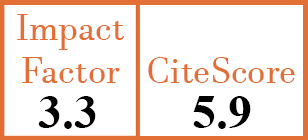Full Papers
Avacopan with combined cyclophosphamide and rituximab for induction therapy in severe ANCA-associated vasculitis: retrospective observational study of 30 patients in two German referral centres
G. Assmann1, E.-B. Adjailia2, S. Klapa3, K. Von Allwoerden4, K. Amann5, R. Turkiewicz6, J. Radermacher7, P. Lamprecht8
- Department of Rheumatology, RUB University Hospital Minden JWK, Minden; and Jose-Carreras Centre for Immunogenetics and Gene Therapy, University Medical School of Saarland, Germany. gunter.assmann@muehlenkreiskliniken.de
- Department of Rheumatology and Clinical Immunology, University of Luebeck, Germany.
- Department of Rheumatology and Clinical Immunology, University of Luebeck, Germany.
- Department of Rheumatology and Clinical Immunology, University of Luebeck, Germany.
- Department of Nephropathology, University Hospital of Erlangen, Germany.
- Department of Pulmonology, RUB University Hospital Minden JWK, Minden, Germany.
- Department of Nephrology, RUB University Hospital Minden JWK, Minden, Germany.
- Department of Rheumatology and Clinical Immunology, University of Luebeck, Germany.
CER18415
Full Papers
Free to view
(click on article PDF icon to read the article)
PMID: 40964814 [PubMed]
Received: 05/12/2024
Accepted : 30/04/2025
In Press: 09/09/2025
Abstract
OBJECTIVES:
Combination therapy of rituximab (RTX) and cyclophosphamide (CYC) can be considered for the induction of remission in severe anti-neutrophil cytoplasmic antibody (ANCA)-associated vasculitis (AAV). The presented study reports on the safety and efficacy of the complement C5a receptor inhibition with avacopan in the patients with severe ANCA-associated vasculitis treated with RTX and CYC in combination.
METHODS:
Retrospective analysis of the clinical course, response to and safety of avacopan in combination with RTX and CYC in 30 patients with severe ANCA-associated vasculitis with renal and at least two further organ-threatening involvement treated in two German referral centres.
RESULTS:
The median observation time was 49 weeks (range 26-52). All patients achieved remission by week 24. Mean BVAS score was 22.8 (range 12-53) at baseline; mean eGFR increased from 44.0 ml/min per 1.73m2 at baseline to 57.6 ml/min per 1.73m2 by week 52. GC comedication was discontinued in 17 of 29 (58.6%) patients by week 24, and in 23 of 28 (82.1%) by week 52. One patient discontinued avacopan treatment due to urosepsis, another due to refractory disease. There was a significant difference in dialysis dependency of GC-free patients versus GC-treated patients at week 24 (n=1 vs. 4, p=0.048, OR 0.12, CI:0.01-1.25).
CONCLUSIONS:
In this observational study, avacopan as GC-sparing agent appeared safe and efficacious in combination with RTX and CYC for remission induction in severe ANCA-associated vasculitis. In this subgroup, prospective studies are needed to determine the efficacy and safety of avacopan in combination with RTX and CYC for guidance of a GC-sparing strategy.


